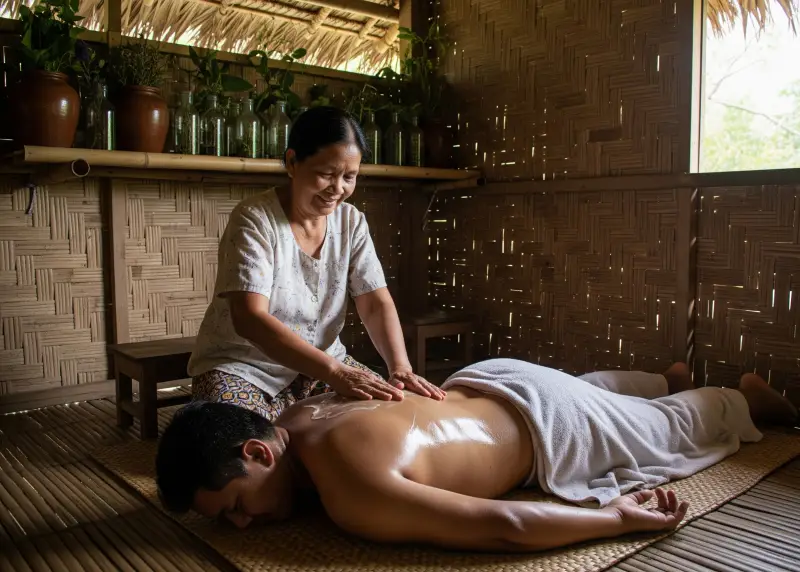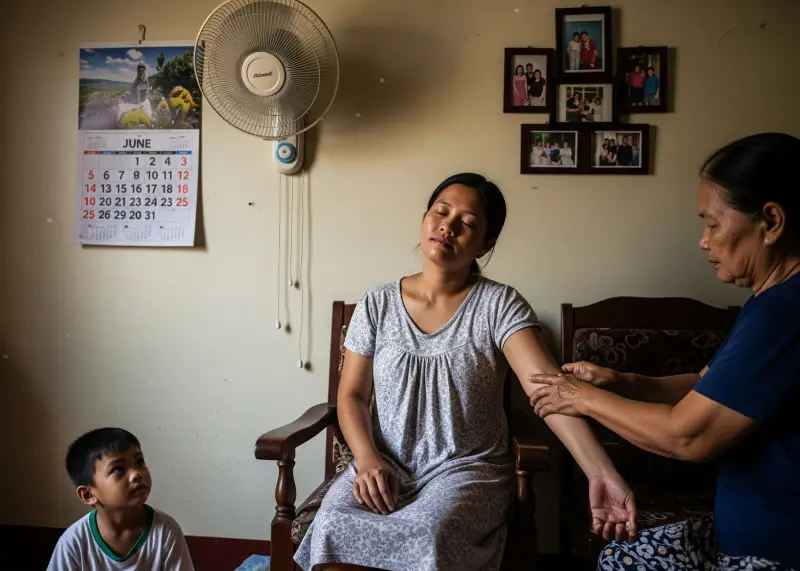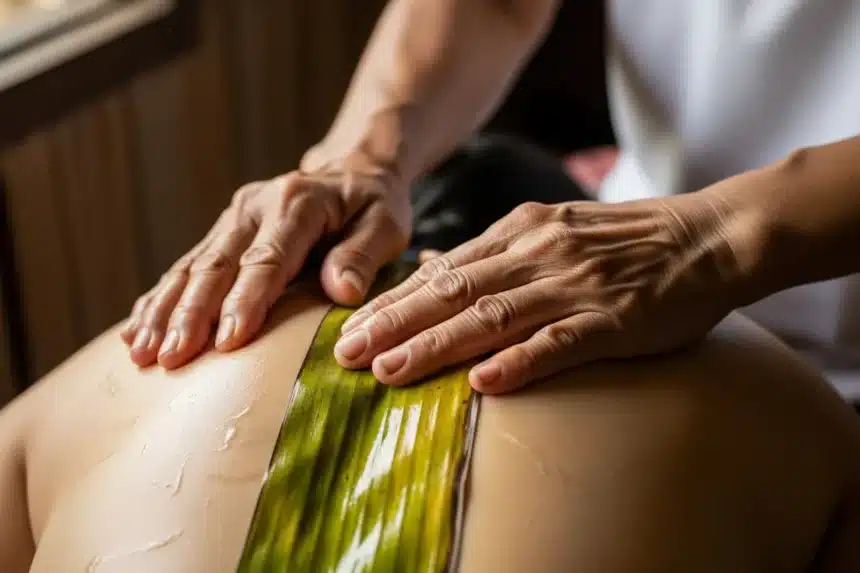In my travels across the Philippines, from the bustling urban centers of Luzon to the quiet coastal barangays of Mindanao, I’ve learned that some of our most profound stories are not written in books, but are passed down through touch. I’ve spoken with fishermen who swear by a local manghihilot to fix a strained shoulder after a long haul at sea, and I’ve listened to mothers in the mountains who first turn to a trusted healer when their child has a persistent fever. This enduring trust in Hilot, our traditional art of healing, has always fascinated me. In an age of sterile clinics, advanced diagnostics, and prescription medicine, why do so many of us still seek the intuitive, powerful hands of a manghihilot?
This question isn’t about dismissing science. As a web developer and tech enthusiast, I have a deep appreciation for modern advancements. Yet, as a storyteller, I’m drawn to the resilience of our traditions. Hilot is more than just a massage; it’s a holistic system of wellness that has been our people’s first line of healthcare for centuries. It’s a practice steeped in a deep understanding of the body’s balance, a philosophy that sees our ailments as connected to our environment, our emotions, and our spirit. This article is my attempt to unpack that connection, to explore the space where ancient wisdom and modern knowledge meet, and to understand why, for so many Filipinos, the healing touch of Hilot remains an irreplaceable part of our lives.
🌿 What Exactly is Filipino Hilot?
Before we can understand its enduring appeal, we need to appreciate what Hilot truly is. It’s often mistakenly simplified as a “Filipino massage” on spa menus, but that’s like calling our complex adobo just “marinated meat.” The true practice of Hilot is a comprehensive healing art. At its core, it is a hands-on therapy aimed at restoring harmony and balance within the body to promote natural healing.
A traditional manghihilot doesn’t just knead muscles randomly. They are highly intuitive practitioners who perform what I can only describe as a form of body scanning. Using their hands, often aided by coconut oil and warmed banana leaves, they search for imbalances-areas of tension, cold spots (lamig), or blockages in the flow of energy.

The Core Philosophy
Hilot is built on a holistic worldview that our well-being depends on the equilibrium of several key elements. While modern medicine looks at pathogens and cellular dysfunction, traditional Hilot looks at the flow of life force.
- Balance is Key: The fundamental belief is that illness arises from an imbalance within the body. This could be a physical misalignment (pilay), a blockage of energy, or an imbalance of the four elements: hangin (air), apoy (fire), tubig (water), and lupa (earth).
- The Body Heals Itself: A manghihilot sees themselves not as the source of the cure, but as a facilitator. Their role is to identify the imbalance and help guide the body back to a state where it can heal itself.
- Connection to Nature: The use of natural tools like banana leaves, coconut oil, and various herbal preparations (albularyo practices often overlap with Hilot) underscores a deep connection to the environment as a source of healing.
👐 The Manghihilot: More Than Just a Massage Therapist
My journey has allowed me to meet a few of these remarkable individuals, and I can tell you that their practice goes far beyond technique. There’s a profound difference between a spa therapist trained in a standardized sequence and a traditional manghihilot whose knowledge was passed down through generations.
The traditional manghihilot is often a respected elder in the community, someone who holds a spiritual and practical role. Their training is not from a textbook but from years of apprenticeship, observation, and intuitive practice. They are part healers, part spiritual counselors, and part keepers of ancestral wisdom.
| Aspect | Traditional Manghihilot | Modern Spa Therapist |
|---|---|---|
| Source of Knowledge | Passed down through generations, intuitive | Formal training, standardized curriculum |
| Diagnostic Method | Body scanning, pulse reading, banana leaf sliding | Client consultation, verbal feedback |
| Primary Goal | Restore balance, address root cause of imbalance | Induce relaxation, relieve muscle soreness |
| Tools Used | Hands, coconut oil, banana leaves, herbs | Hands, commercial massage oils, hot stones |
| Role in Community | Community healer, spiritual figure | Service provider, wellness professional |
🤔 Tradition vs. Modern Medicine: The Great Debate
This is where the conversation gets truly interesting. For many Filipinos, the choice isn’t “either/or” but “both/and.” We live in a world where these two systems of healing coexist, often within the same household. A person might see a doctor for a prescription to manage high blood pressure but visit a manghihilot to deal with the chronic back pain and stress that contributes to it.

Why Filipinos Still Choose Hilot
From my conversations and observations, the persistent love for Hilot comes down to a few key factors that modern medicine sometimes struggles to address.
- The Power of Touch and Personalized Care: A Hilot session is deeply personal. The manghihilot focuses entirely on you, their hands reading the story your body tells. This is a far cry from a rushed, ten-minute doctor’s appointment. This focused, caring touch is, in itself, incredibly therapeutic.
- Addressing “Folk Illnesses”: Hilot is often the go-to remedy for ailments not easily categorized by Western medicine. Conditions like pasma (a hot/cold imbalance), usog (an affliction caused by an evil eye or greeting), or simple lamig (coldness trapped in the muscles) are understood and addressed within the Hilot framework.
- Accessibility and Affordability: In many rural areas, the local manghihilot is far more accessible than the nearest clinic. The cost is also significantly lower, often involving a small donation or pakimkim rather than a fixed, expensive fee.
- Cultural and Psychological Comfort: There is an immense psychological comfort in turning to a practice that our ancestors trusted. It feels familiar, holistic, and validating of our cultural beliefs about health and the body. It connects us to our roots in a way a prescription never could.
The Perspective of Modern Medicine
Of course, the medical community urges caution. While many doctors acknowledge the benefits of massage for stress relief and muscle pain, they raise valid concerns.
- Lack of Scientific Validation: Many of Hilot’s claims are difficult, if not impossible, to prove through randomized controlled trials. The concepts of energy flow and elemental balance do not fit neatly into the scientific method.
- Risk of Injury: For serious conditions like fractures, deep vein thrombosis, or certain spinal issues, the manipulations of an untrained practitioner could cause significant harm. A manghihilot might misdiagnose a serious underlying condition that requires immediate medical intervention.
- Regulation and Standardization: The practice of traditional Hilot varies greatly from one healer to another. While there are efforts by agencies like the Philippine Institute of Traditional and Alternative Health Care (PITAHC) to offer certification, many practitioners operate outside of any formal system.
| Approach | Hilot (Traditional Healing) | Modern Medicine (Western) |
|---|---|---|
| Focus | Holistic balance (body, mind, spirit) | Specific symptoms and pathology |
| Diagnosis | Intuitive touch, identifying imbalances | Scientific testing, imaging, lab work |
| Treatment | Manual manipulation, herbs, energy work | Pharmaceuticals, surgery, physical therapy |
| Strengths | Personalized care, addresses chronic pain/stress | Treats acute illness, infections, trauma |
| Limitations | Not suitable for emergencies or serious diseases | Can be impersonal, may have side effects |
🧘 The Future of Hilot: Integration and Preservation
Walking through a high-end mall in Manila, it’s not uncommon to see “Hilot” on the menu of a luxury spa. This is the new face of our ancient tradition. It’s being repackaged, standardized, and offered as a premium wellness experience. On one hand, this brings Hilot to a new audience and provides a livelihood for trained therapists. It’s a sign that our culture is being celebrated.
However, there’s a risk that in this commercialization, the deeper, spiritual essence of the practice could be lost. The true manghihilot is not just performing a service; they are engaging in a sacred act of healing. The future, I believe, lies in a path of respectful integration. We must preserve the authentic knowledge of our community elders while also educating people on when to seek modern medical help. It’s about creating a healthcare landscape where a doctor can diagnose an illness and a manghihilot can help manage the body’s recovery and overall well-being.

📌 Frequently Asked Questions
1. Is Hilot painful? It can be. Unlike a gentle Swedish massage, a traditional Hilot session can be intense, especially if the manghihilot finds a blockage or deep-seated lamig. The belief is that this discomfort is part of the healing process-the “no pain, no gain” of restoring balance.
2. What is the banana leaf used for? The banana leaf, when warmed and slicked with coconut oil, is believed to act as a natural scanner. Practitioners say it sticks or resists gliding over areas of the body where there is an energy imbalance or ailment, guiding their hands to where the work is needed.
3. Can Hilot fix a broken bone? No. While some manghihilot are also skilled in bone-setting (pag-aayos ng buto) for minor dislocations or sprains, a suspected fracture or serious injury should always be treated by a medical doctor with access to X-rays and proper medical equipment.
4. How do you find an authentic manghihilot? The best way is through word-of-mouth within a local community. Ask around in the provinces or smaller towns. While spas offer a version of Hilot, the most authentic practitioners are often found through local recommendations, not advertisements.
5. Is there an official certification for Hilot practitioners? Yes, the Department of Health (DOH) through PITAHC has been working on national certification programs to standardize training and ensure the safety and competency of practitioners. However, many traditional healers still practice based on their lineage and community recognition.
6. What should I do after a Hilot session? Practitioners often advise you to rest, avoid bathing for a few hours to let the oils absorb, and drink plenty of warm water or ginger tea (salabat). They may also advise you to avoid exposing your back to cold wind (hangin).
A Lasting Touch
My travels have taught me that the story of Hilot is the story of Filipino resilience. It has survived colonization, the rise of modern science, and the fast pace of globalization. It endures because it speaks to a fundamental part of our identity-a belief in the power of human connection, in the wisdom of nature, and in a definition of health that includes not just the body, but the soul.
It’s not about choosing one over the other. It’s about having the wisdom to know when we need a doctor’s prescription and when we need the healing, intuitive touch of a manghihilot. In a world that often feels disconnected, perhaps the greatest gift of Hilot is its simple, powerful reminder that healing begins with a trusting, human touch. And that is a tradition worth preserving.







